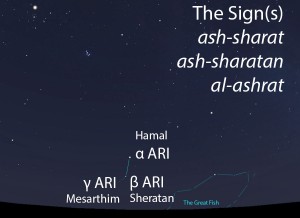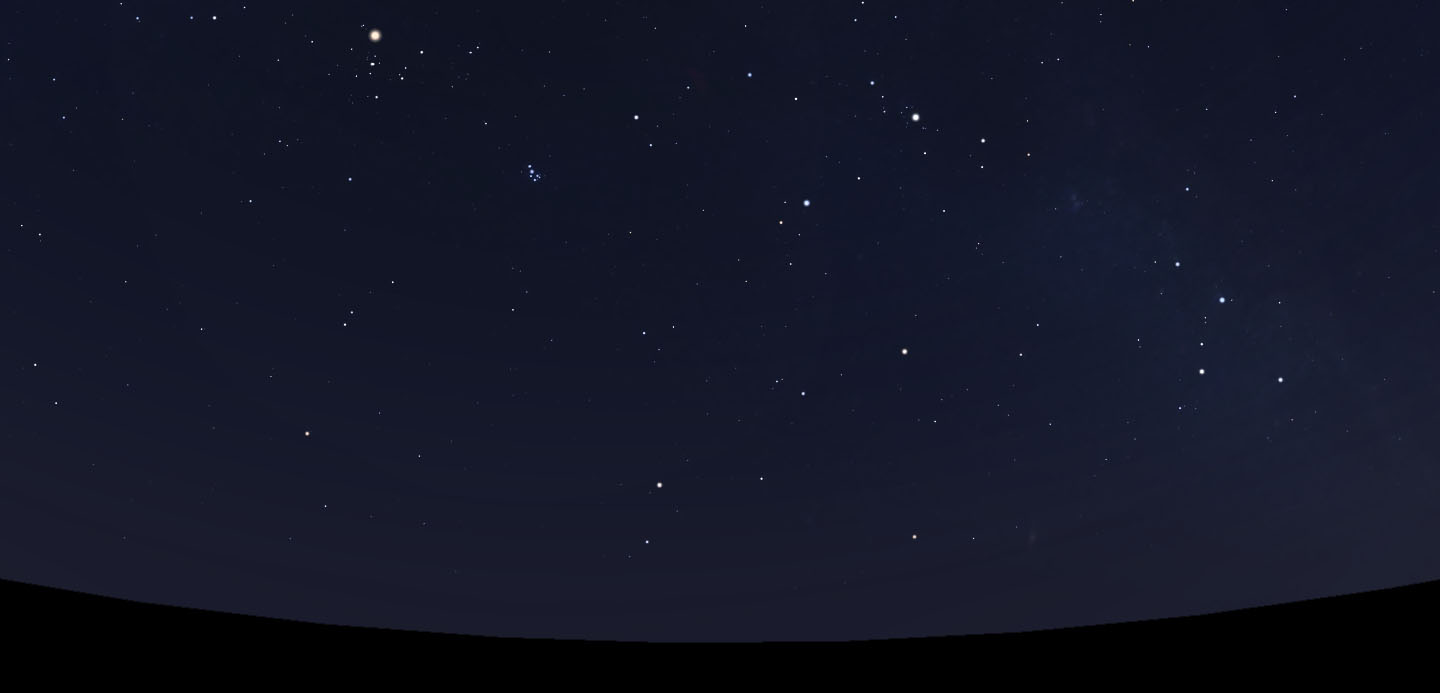Star Names
The Sign (ash-sharat)
The Two Signs (ash-sharatan)
The Signs (al-ashrat)
The Signs is an asterism whose origins and meaning are uncertain prior to the translations of foreign sciences. After the translation of Indian astronomy, it was often taken to refer to its being the first in the series of lunar stations. Under the influence of Greek astronomy, it was taken to indicate the sun’s position in this asterism at the start of the solar year.
Grammatically, ash-sharatan is the Arabic dual form that refers to the two brighter stars in this asterism, “the Two Signs.” The singular term ash-sharat refers to the pair of stars as a single asterism, “the Sign (of the two stars).” The plural term al-ashrat refers to three stars, including the two bright stars and a third one close to it.

The Signs (ash-sharatan) as they appear setting in the west about 45 minutes before sunrise in early November. Sky simulations made with Stellarium.
Appearance
A pair of bright stars located southeast of the Great Fish, roughly between the modern-day Square of Pegasus and the Pleiades star cluster. A third dimmer star located near the southwestern star of the pair is sometimes included in the group under the name al-ashrat.
Modern Identification
α ARI (Hamal), yellow giant star, magnitude 2.0
β ARI, (Sheratan), white star, magnitude 2.6
Al-ashrat also includes:
γ ARI (Mesarthim), white double star, magnitudes 4.6 each
Timing
The two stars of the Two Signs rise together but set about 5 days apart. Ibn Qutayba (d. 879 CE) reported that the Signs was said to rise on the morning of April 16 and set on the morning of October 16. On account of the precession of the equinoxes, today we can expect to observe the Signs setting in mid-November and rising at the end of April, as seen from the latitude of Tucson. (See How to Observe on the About page for more on this topic.)
Rain Stars
In the calendars of Qushayr and Qays, the morning setting of the Sign (ash-sharat) occurs during the autumnal rainy season called al-wasmi. This season is so named because the rains literally mark (yasim) the ground in terms of both the force with which the heavy rains hit the parched earth and the green foliage that quickly appears as a result of the rain.
Lunar Stations
In early listings of the lunar stations, the Two Signs (ash-sharatan) is the third station of the year. This was later changed to the first lunar station after the stations were adjusted to begin with the vernal equinox, which long ago took place amidst the Two Signs. The stars of the Two Signs match the Hindu nakshatra called Ashvini.

